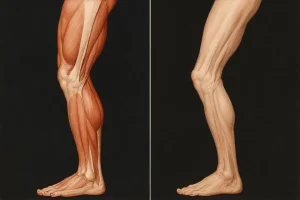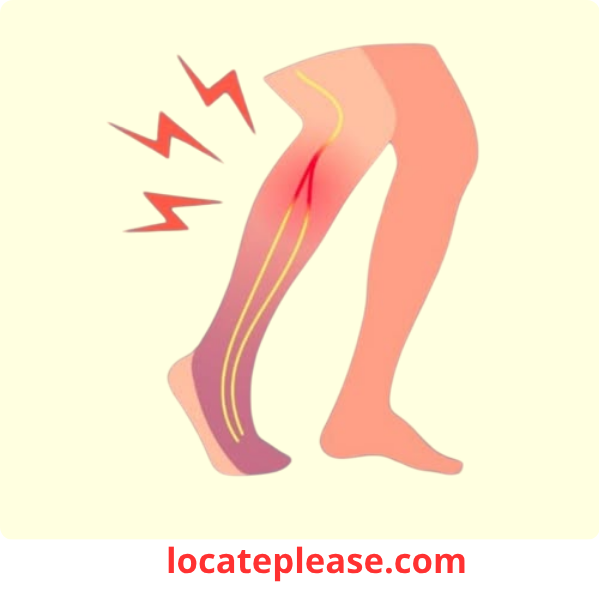It’s perfectly normal to feel concerned as you age if your legs don’t seem as strong as they once were. You might notice it when getting up from a chair or find climbing stairs more challenging than it used to be. While this can feel worrying, the positive news is that understanding the reasons behind leg weakness is the first step toward addressing it. Let’s explore why leg weakness can develop with age and, more importantly, what you can do to keep your legs strong and dependable.
Why Do Our Legs Weaken as We Get Older?
Leg weakness is frustrating, but it’s not something you have to simply accept. There are common causes behind it, and understanding them empowers you to take action. Here are five surprising reasons for weak legs in seniors—and practical solutions to combat them.

1. Muscle Loss (Sarcopenia)
One major factor contributing to weak legs is sarcopenia, or age-related muscle loss. After the age of 50, it’s typical to lose about 15% of muscle strength per decade , though this varies for each person. Being inactive accelerates this process, making regular movement essential to maintaining muscle mass and function.
How to Fix It:
- Incorporate resistance exercises into your routine, such as lifting light weights or using resistance bands.
- Focus on exercises like squats, lunges, and calf raises to target key leg muscles.
- Include protein-rich foods like eggs, lean meats, beans, and dairy in your diet to support muscle repair and growth.
2. Reduced Physical Activity
As people grow older, they may naturally slow down their activity levels due to lifestyle changes, health concerns, or lack of motivation. This sets up a harmful cycle: less activity leads to weaker muscles, which makes it even harder to stay active. Inactivity can also contribute to poor circulation, joint stiffness, and conditions like type 2 diabetes.
How to Fix It:
- Start small by incorporating daily walks, even if it’s just around the house or block.
- Try low-impact activities like swimming, cycling, or yoga to improve mobility without straining joints.
- Set realistic goals, such as walking an extra 5 minutes each day, to gradually increase your activity level.
3. Chronic Health Conditions
Certain long-term health problems, such as arthritis, diabetes, and peripheral neuropathy, can significantly impact leg strength. For example, nerve damage from diabetes may cause tingling or numbness, making movement uncomfortable and increasing the fear of falling. These fears often lead to reduced activity, worsening the issue.
How to Fix It:
- Work closely with your doctor to manage chronic conditions through medication, diet, and exercise.
- Engage in physical therapy to strengthen muscles safely while managing pain.
- Practice balance exercises, such as standing on one foot or heel-to-toe walking, to reduce the risk of falls.
4. Back Problems
Lower back issues, such as spinal stenosis, herniated discs, or sciatica, can affect the nerves that run to your legs, causing weakness, pain, or numbness. These conditions often make movement uncomfortable, leading to decreased activity and further weakening of the legs.
How to Fix It:
- Consult a healthcare provider for specialized advice if you experience persistent numbness, tingling, or weakness.
- Perform gentle stretches and exercises recommended by a physical therapist to alleviate pressure on the spine and strengthen supporting muscles.
- Use proper posture and ergonomic tools to minimize strain on your back during daily activities.
5. Lack of Motivation
Mental and emotional changes can also play a role in leg weakness. Retirement, depression, or the loss of a loved one can leave seniors without the motivation to stay active. A change in routine after leaving work might result in less movement, which contributes to muscle decline.
How to Fix It:
- Build a support system by exercising with a friend, joining a senior fitness group, or leaning on family for encouragement.
- Find activities you enjoy, such as dancing, gardening, or tai chi, to make staying active fun and engaging.
- Seek professional help if feelings of sadness or isolation persist—they could be signs of depression that require attention.
Key Reminders
Maintaining strong legs doesn’t require drastic measures—it’s all about consistency and finding what works best for you. Here are a few simple home exercises to get started:
Simple Home Exercises
- Chair Stands:
- Practice rising from a chair and sitting back down slowly to build practical leg strength. If it’s difficult, use a higher chair or place a cushion on the seat, and aim to eventually do it without using your hands.
- Lunges:
- Lunges work each leg individually and challenge your balance. Take a forward step, lower your back knee gently, and push off to stand up again. Hold onto a surface if needed for stability.
- Walking:
- Walking is simple yet powerful. Start on level ground, using a cane or walker if you need stability. Gradually increase distance and pace over time.
- Heel Raises:
- Stand near a wall or sturdy surface for support. Slowly lift your heels off the ground, hold for a few seconds, then lower them back down. Repeat 10–15 times to strengthen calves.
Weak legs are a common concern among seniors, but they don’t have to define your golden years. By understanding the underlying causes—such as muscle loss, reduced activity, chronic health conditions, back problems, and lack of motivation—you can take proactive steps to regain strength and confidence. Remember, staying active, eating well, and seeking professional guidance when needed are key to keeping your legs strong and dependable. With determination and support, you can continue living life to the fullest—one step at a time!










